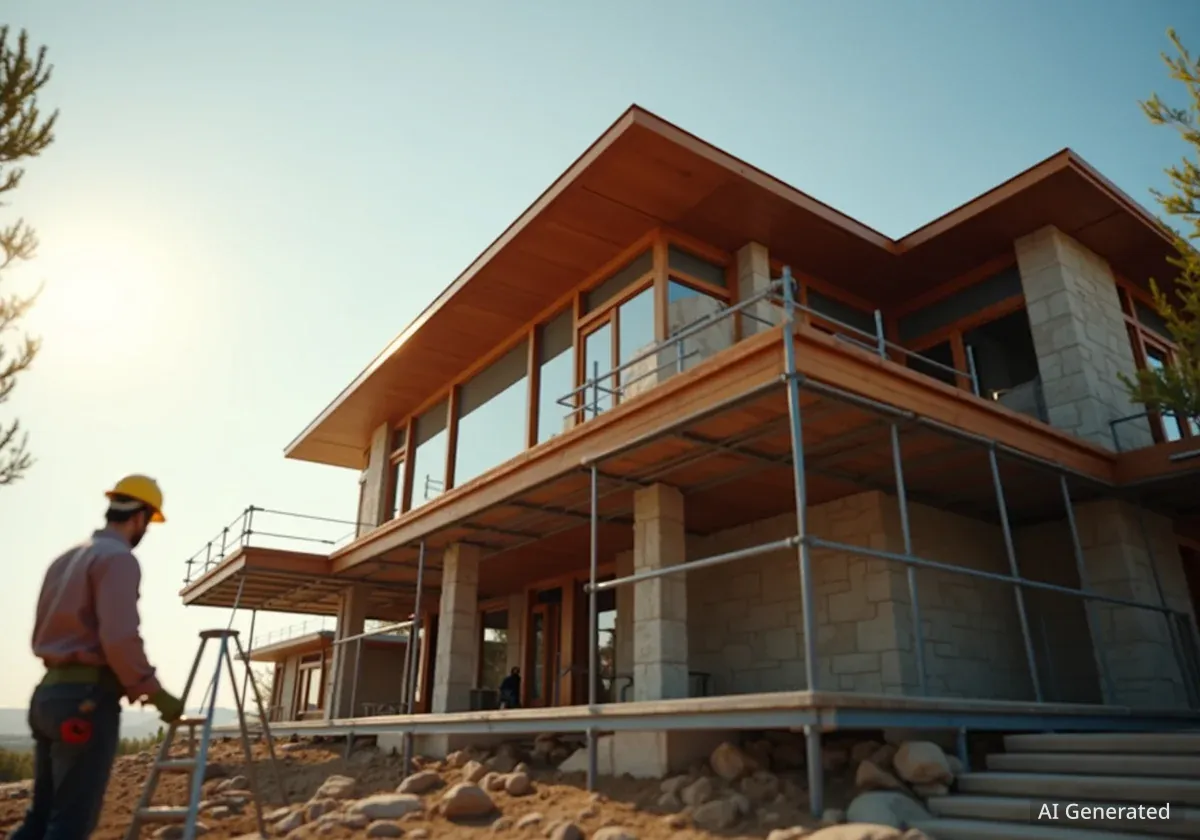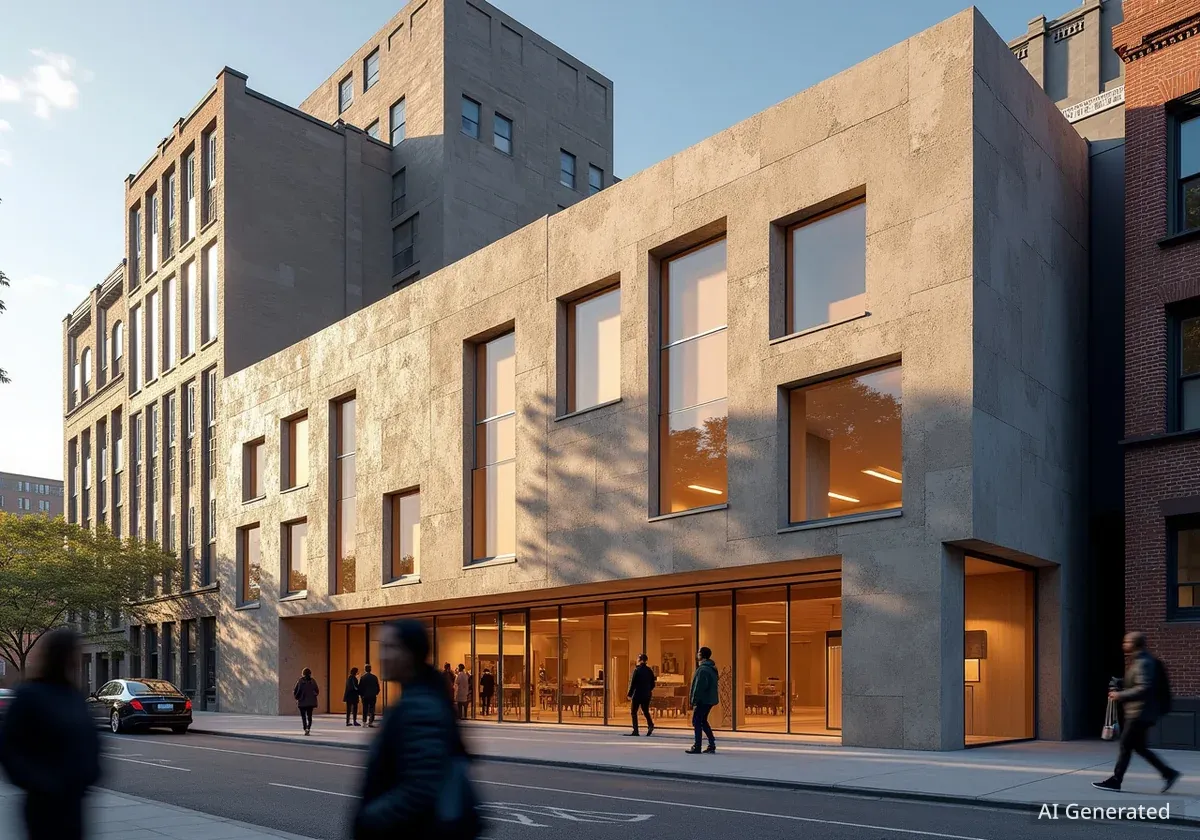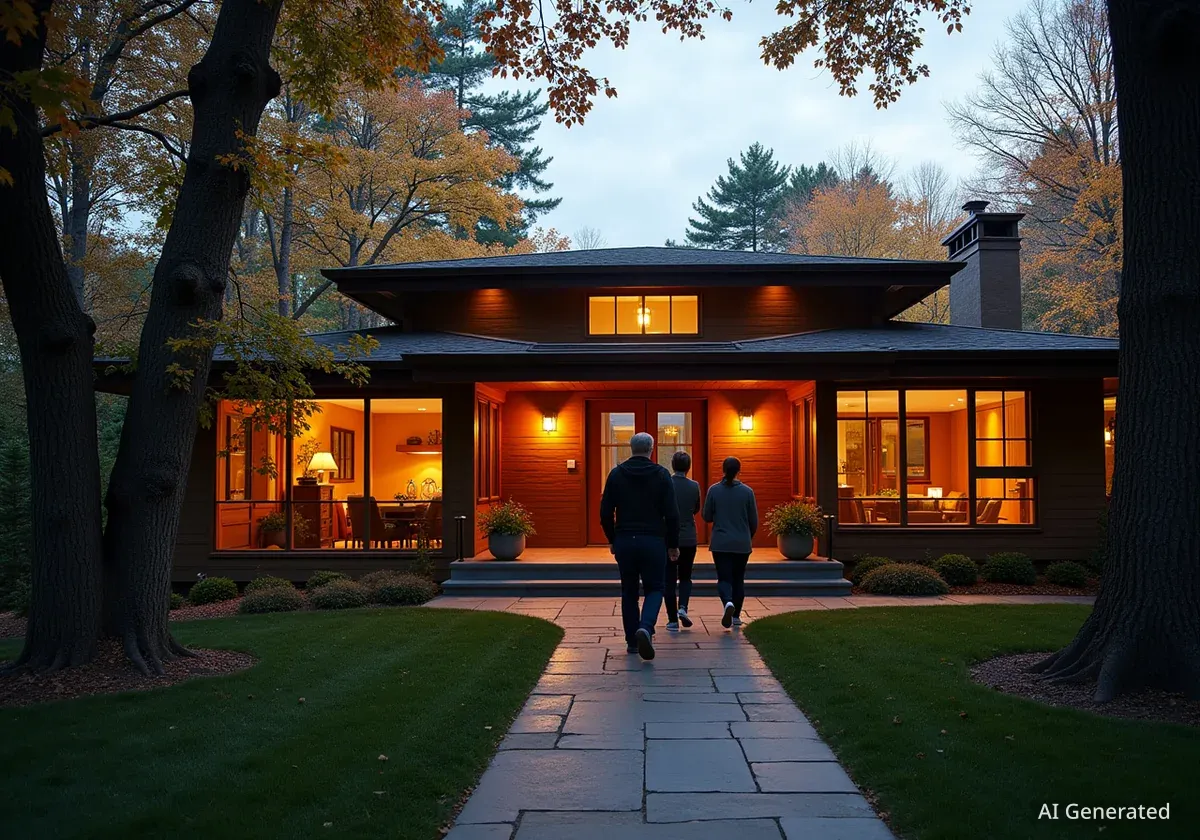A mother-daughter team has completed the final residential design by renowned architect Frank Lloyd Wright. The home, known as RiverRock, is located in Willoughby, Ohio. Its construction journey is now featured in a new Magnolia Network series.
Debbie and Sarah Dykstra purchased the land and committed to building the Penfield House plans, which Wright designed in the 1950s. Their dedication ensures the structure closely follows Wright's original vision.
Key Takeaways
- Frank Lloyd Wright's last residential design, known as RiverRock, has been built.
- Mother-daughter duo Debbie and Sarah Dykstra completed the project in Willoughby, Ohio.
- The 14-month construction process is documented in a Magnolia Network show.
- The RiverRock House is now available for rent.
- Wright's design incorporated the landscape, including a specific poplar tree.
Bringing a Vision to Life: The RiverRock Project
The Penfield House was initially designed by Frank Lloyd Wright for art teacher Louis Penfield. This project, conceived in the 1950s, was among Wright's last residential plans. He passed away in 1959, leaving the blueprints on his drawing board.
For decades, the Penfield family held onto the hope that the house would one day be constructed. This long-standing dream found its realization through Debbie and Sarah Dykstra.
The Dykstras acquired the 30-acre property in Ohio. They pledged to build the home, adhering strictly to Wright's architectural principles. Their commitment was to preserve the artistic integrity of the design.
"To take this piece of art and have them change it would be very hurtful," Sarah Dykstra stated on the Magnolia Network, emphasizing their dedication to authenticity.
Interesting Fact
Frank Lloyd Wright, born in Richland Center, Wisconsin, is considered one of history's most influential architects. Over 40 of his buildings are located in Wisconsin alone.
The Construction Journey and Television Series
The construction of RiverRock spanned 14 months. This entire process was filmed and is now the subject of a Magnolia Network series titled "The Last Wright: Building the Final Home Design of America’s Greatest Architect."
The show premiered this month and is available for streaming on HBO Max. It offers viewers an inside look at the challenges and triumphs of realizing Wright's vision.
The RiverRock House was completed in January. It is currently available for people to rent, offering a unique opportunity to experience Wright's architecture firsthand.
Integrating with Nature: The Poplar Tree's Role
Frank Lloyd Wright's design for the Penfield House was deeply connected to its natural surroundings. Specifically, it was oriented around a small poplar tree on the property.
Debbie Dykstra explained that the house was designed to sit at roughly 60 degrees off this particular tree. This precise placement created a challenge during modern construction.
The builders had to navigate the tree's roots, which posed a risk to the tree's survival. Their goal was to make the build as authentic as possible while also preserving the natural element integral to the design.
"Seventy years ago, it would have been fun, but because we were doing it now, the design created a problem with the roots. We were afraid we were going to lose the tree," Debbie Dykstra told WPR’s "Wisconsin Today." "But this house sits right on this particular piece of land because of that poplar tree and we decided to make the build as authentic as possible. We had to stick to that particular spot and try to save that poplar tree. And so far, so good."
Historical Context of Wright's Designs
Wright was a pioneer in organic architecture, aiming to integrate buildings with nature. He often incorporated natural materials and designed structures that harmonized with their environment. His work significantly influenced modern architectural thought.
Budget and Enduring Architectural Philosophy
The original budget for the Penfield House in 1959 was approximately $25,000. Sarah Dykstra noted the vast difference in construction costs today.
She estimated that $25,000 in current terms might only cover a single door of the house. The present-day cost was significantly higher than the 1959 budget but less than their initial construction bid.
Debbie Dykstra shared her admiration for Wright's architectural style. She highlighted how his approach differs fundamentally from contemporary construction methods.
Wright's Innovative Design Elements
- Inside-Outside Design: Wright was among the first to integrate indoor and outdoor spaces seamlessly. The RiverRock House features 18-foot windows, making occupants feel connected to nature without exposure to weather changes.
- Great Room Concept: He pioneered the open-plan "great room," a design element widely adopted in modern homes. This concept promotes a sense of spaciousness and connectivity within the living area.
- Passive Solar Energy: Sarah Dykstra pointed out Wright's foresight in incorporating passive solar energy systems into his designs in the 1950s. This highlights his early understanding of sustainable architecture.
- Straight Lines and Materials: Sarah also expressed her personal appreciation for Wright's use of straight lines, glass, and natural rock, which are prominent features in his work.
The Dykstras' passion for Wright's work stems from different perspectives. Debbie appreciates the feeling of being outdoors while inside. Sarah is drawn to the geometric lines and innovative engineering.
The Experience of Filming a Major Project
The process of building the RiverRock House was not only a construction project but also a television production. Debbie Dykstra, at 74, described it as one of the strangest experiences of her life.
She found the experience rewarding, despite the unusual circumstances. The family learned much from the production crew, and the crew also gained insights from the family's dedication to the project.
A key request from Debbie during filming was to limit takes. She insisted on a maximum of three takes for any scene, preferring a natural, less rehearsed approach. This helped maintain authenticity throughout the show.
The entire Dykstra family was involved in the project at various stages. This collective effort made the experience even more special, ensuring their contribution to Wright's legacy would be remembered.
Architectural Legacy
Frank Lloyd Wright designed over 1,000 structures during his career, with about 532 completed. His influence continues to shape architectural discourse and practice globally.
Public Access and Future Impact
The completion of the RiverRock House offers the public a unique opportunity to engage with Frank Lloyd Wright's legacy. By making the house available for rent, the Dykstras are allowing many to experience the architect's final residential vision.
This project not only preserves an important piece of architectural history but also introduces it to a new generation through both the rental opportunity and the television series.
The story of RiverRock highlights the enduring appeal of Wright's designs and the dedication required to bring such complex visions to fruition decades later.




